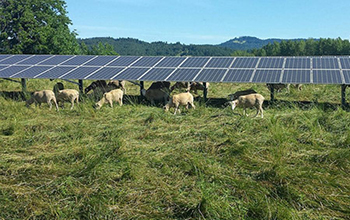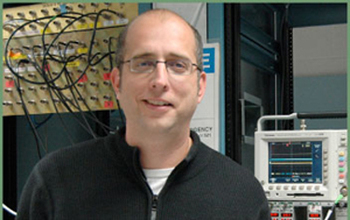
Research News
Research on solar panel placement has implications for constructing large solar arrays in deserts
August 13, 2019
The most productive places on Earth for solar power are farmlands, according to an NSF-supported Oregon State University study.
The study, published in the journal Scientific Reports, finds that if less than 1% of agricultural land were converted to solar panels, it would be sufficient to fulfill global electric energy demand. The concept of co-developing the same area of land for both solar photovoltaic power and conventional agriculture is known as agrivoltaics.
“Our results indicate that there’s a huge potential for solar and agriculture to work together to provide reliable energy,” said corresponding author Chad Higgins of OSU’s College of Agricultural Sciences. “There’s an old adage that agriculture can overproduce anything. That’s what we found in electricity, too. It turns out that 8,000 years ago, farmers found the best places on Earth to harvest solar energy.”
The results have implications for the current practice of constructing large solar arrays in deserts, Higgins said.
The researchers analyzed power production data collected by Tesla, which has installed five large grid-tied, ground-mounted solar electric arrays on agricultural lands owned by Oregon State.
Then they synchronized the Tesla information with data collected by microclimate research stations at the arrays, which recorded mean air temperature, relative humidity, wind speed, wind direction, soil moisture and incoming solar energy.
“We found that when it’s cool outside the efficiency gets better,” Higgins said. “If it’s hot the efficiency gets worse. When it is dead calm the efficiency is worse, but some wind makes it better. As the conditions became more humid, the panels did worse. Solar panels are just like people and the weather, they are happier when it’s cool and breezy and dry.”
The research is funded by NSF’s Innovations at the Nexus of Food, Energy and Water Systems Program.
—
NSF Public Affairs,
(703) 292-7090 media@nsf.gov
Source: NSF News
Brought to you by China News








